Learn About Buffalo Grass- How to Grow and Care
Now that spring is about to end, and the summer is closing in, we all want to spend more and more time in our back or front yards. We want to hang out with family and friends or maybe want to have a BBQ Day in your yards with our loved ones. So, if you are interested in gardening or want to have a yard that looks neat and pretty, you should probably learn how to take care of your lawn.
You might want lovely and colorful flowers, bright-colored bushes, or maybe beautiful trees to decorate it for a beautiful yard. However, for a beautiful yard, the first requirement is probably, the grass. You need healthy, grown, and nice-looking grass to complement your yard. You might be new to this, or you might be pretty experienced with lawn care. Nonetheless, lawn care is not that hard or complicated when you get the hang of it.
So, if you are interested in taking care of your yard or maybe planting some grass to make it look better, this is the right article for you as we will be learning about a grass type that you might be interested in, Buffalo Grass.
What is Buffalo Grass?
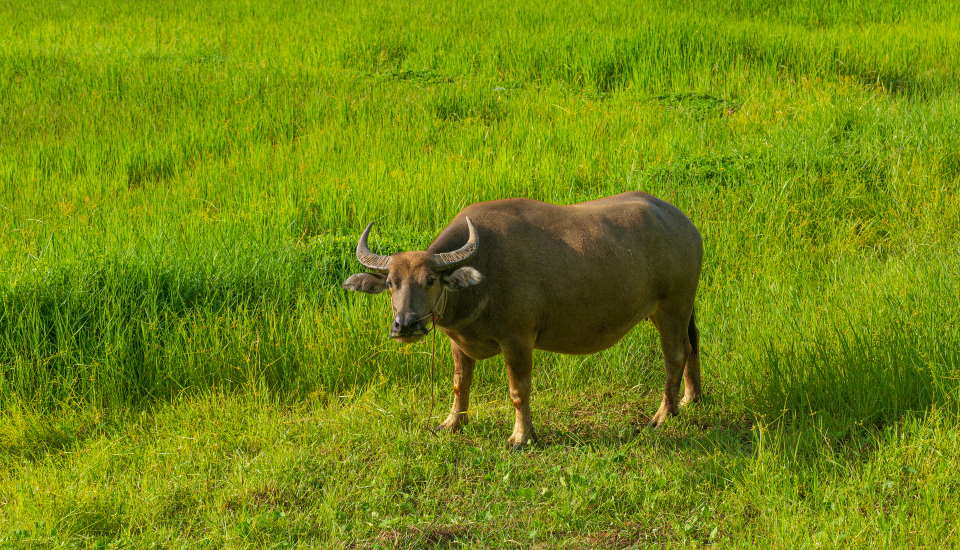
Buffalo grass, also known as the Bouteloua dactyloides or buffalograss, is a low-maintenance grass type that grows in warmer seasons, and it is also known for the blue to the gray-greenish color of its leaf blades. It is also a type of grass that is drought tolerant and durable. It is native lawn grass in North America, Canada, and Mexico, and some prominent buffalo grass types are “Cody” and “Texoka.”
The name “buffalo grass” comes from the commonly fed bison and Buffalo across the Great Plains in the nineteenth century, and since then, it’s way more domesticated. Buffalo grass lawns are widely used for many yards, especially for golf courses, as they are grown from buffalo grass seeds. As it is a durable grass type, it’s pretty easy to take care of and does not require a lot of maintenance. If you are looking for a sustainable kind of grass that is an alternative to traditional ornamental lawn grass types, buffalo grass could be a perfect option.
What is the Best Type of Buffalo Grass?
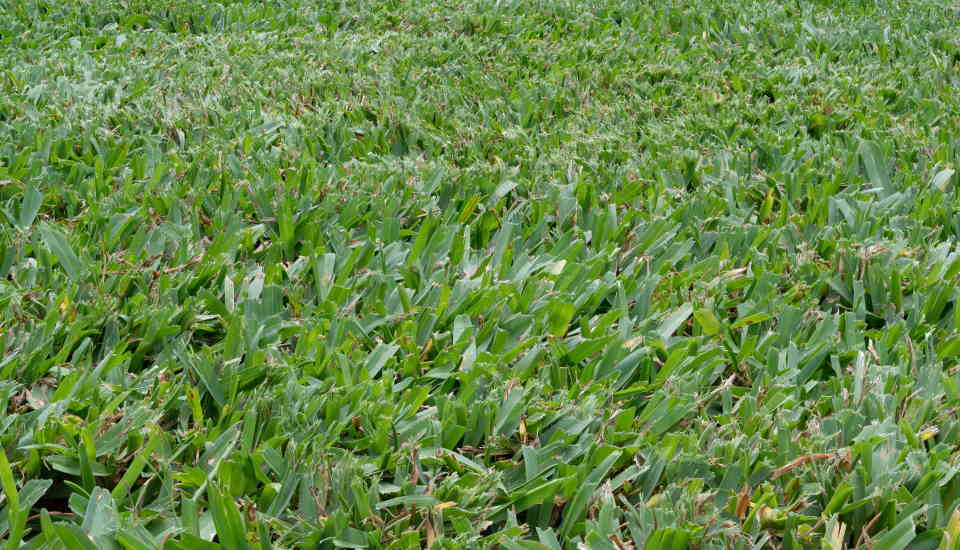
When choosing the suitable Buffalo Grass or Buffalo Turf Grass, you should consider if the one you are looking for is the right one for your space, needs, or the climate. So, now let’s look into the different types of Buffalo Grass.
There are five main features that you should consider when choosing the suitable type of Buffalo Grass for your yard.
1-Shade Tolerance
Buffalo grasses with soft leaves are generally the most tolerant of the shades in the warmer seasons as they have broad leaves and, therefore, capture more sunlight. The best shade tolerant type, which is Sapphire Soft Leaf Buffalo, can withstand up to 70% shade on a daily basis.
Generally, other Buffalo grasses can usually tolerate between 60%-70% shade levels. The types of Prestige Soft Leaf Buffalo and Palmetto Soft Leaf Buffalo are good examples of this. When growing a buffalo lawn under normal or partial shaded conditions, you should keep these points in mind.
Lastly, you should be aware that all types of grasses, including Buffalo, need direct sunlight daily and will not survive if they do not receive the daily sunlight required.
2-Drought Tolerance
Buffalo grass has deep root systems, and it uses water very efficiently. Due to this efficiency, buffalo grass can stay greener for more extended periods of time and endure drier conditions. Buffalo is one of the only types that does not brown off in drought even though you do not top up it with any water. However, buffalo grass will definitely need some watering during long periods of drought to survive.
You should keep your eyes on your lawn during periods of drought, and you should not let your Buffalo grass brown from drought for more than a week. However, if that happens and your Buffalo lawn goes brown from drought stress, you do not have to worry right away as they are also known for their full and fast recovery rates once drought or water restrictions end.
3-Winter Color
If you love to spend time in your yard, winter color is probably an important characteristic when choosing suitable grass for your front or back yard. Winter color refers to the ability of buffalo grass types that are able to keep their green color during winter. If you do not want your yard to lose its green color, or you want to have the least possible amount of browning off, you should prefer the new generation type buffalo grasses as they are some of the best buffalo breeds in regard to maintaining their beautiful during cold winters.
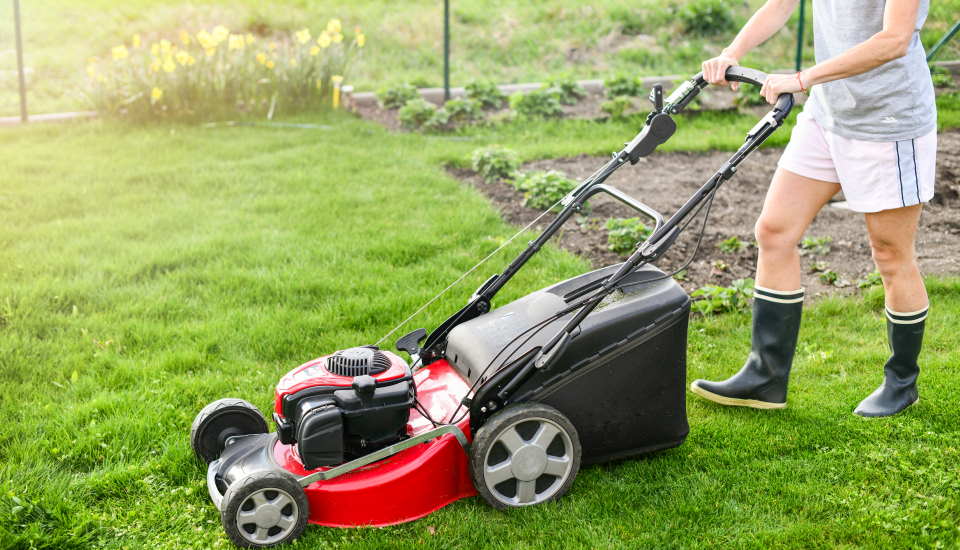
4-Wear Tolerance
If you are planning to plant some Buffalo grass in your front or back garden, and you want your children or maybe grandchildren to play in that yard, or perhaps you have pets, in all that cases, you should definitely consider the wear tolerance as well.
Thanks to its deep roots and fast-growing stolons and runners, they are pretty fast to recover from any wear. Due to its wear tolerance, families with pets and young children can prefer Buffalo grass as it can stand up to frequent use easily.
5-Salt Tolerance
Buffalo grasses can live in areas exposed to a limited amount of salt exposure, so you can prefer it for coastal regions or next to pools that use saltwater. However, you should not use salt water to irrigate your Buffalo lawn.
How to identify Buffalo Grass?
Buffalo grass can vary in looks and feeling depending on the type of buffalo grass. In the warmer seasons, they have broadleaf blades that are lush in green color, a low growing grass type, and spread by stolons. Newer varieties of buffalo turf grasses are soft to the touch, and they are non-allergenic.
Sapphire
Sapphire Buffalo grass is a good choice if you are looking for a grass type that is shade tolerant. This type also requires less frequent mowing, so it is an excellent choice if you are looking for a type that requires less maintenance.

Palmetto Buffalo
Palmetto is the biggest selling Buffalo grass in the world. It’s pretty low maintenance and needs less watering. It is a great hard-wearing option if you have a family with kids and pets. Palmetto grows denser than other types of grasses, so it means it is way harder for weeds to invade your lawn.
Matilda Buffalo
Matilda is another buffalo variety that can maintain its winter color even in full sun. It prefers sunny and warmer weather, but it can also withstand high wear and tear, so you can also choose this if you have a family with kids or pets and use your front or back yard actively.
How to Plant Buffalo Grass?
Now you know the buffalo grass types and what to look for when deciding to purchase seeds. The next step is to plant your grass, but how?
Site Selection and Preparation
The first step is selecting the right site and preparation. Buffalo grass needs and are that gets 6-8 hours of daily sunlight. Morning sun is especially critical for this type. It prefers well-drained and non-sandy soil types and does not tolerate standing water for long periods of time, so you should probably correct your drainage problems, if you have any, prior to seeding. You should also test the fertility of your soil and pH levels, as it is important to consider. The optimum pH level for your soil is between 6.0 and 7.5.
You can get help from your local cooperative services for soil testing and recommendations. You can also learn proper methods for soil amendments from them.
When to Plant Buffalo Grass?
You will get the best results when plating when you place the seeds in good contact with the soil at 0.25 to 0.50 inches deep. You should not plant your seeds any deeper, so seeing the seeds on the soil’s surface is a good sign, and it means seeds are not planted too deep.
You should plant buffalo grass during Spring and summer months after the soil degree is at least 55 degrees 55, as it is the best time to do so. Suppose you are irrigating during the establishment period. In that case, you should water the plant every day for the first week and then every other day the second week and every third day the third week when the temperature reaches 50 degrees F.
On non-irrigated sites, you should plant your seeds 0.50 inches deep earlier in the season for the best results.
If you have easy access to irrigation, you should delay planting until the Crabgrass begins to appear in the soil. After that, you can cultivate the Crabgrass stands and then plant the Buffalo grass.
How to Water Your Buffalo Lawn?
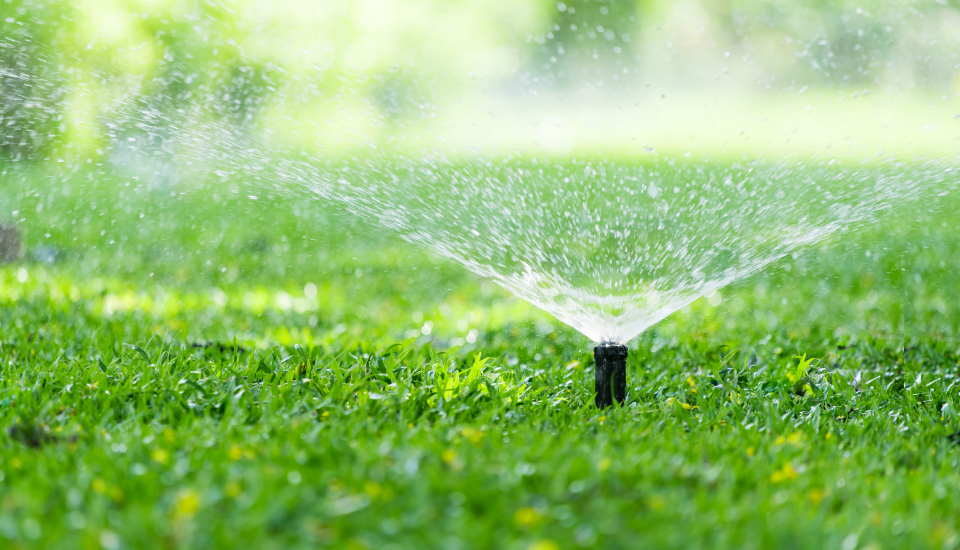
The amount of water your lawn needs may depend on several factors: climate, location, the amount of sunlight it gets on a daily basis, and the age of the grass. The experts recommend soaking the lawn deeply in water 2-3 times per week instead sprinkling five times a week over several days. One of the common mistakes is not watering the lawn enough, so if you regularly water the grass, you can significantly reduce thatching and dead patches.
- It would be best to have a watering routine to keep your soil hydrated. A good watering routine is especially important after the establishment of the lawn. It would help if you had regular and deep watering routines so you could encourage the grassroots to go deeper into the soil.
- Once the roots are fully established, you need to water thoroughly only when needed, usually once every 7-10 days in summer (if your soil is sandy, you should water more often) and less in colder months.
- Keep in mind that infrequent deep watering can help you have a healthy lawn.
- Overwatering the grass encourages excessive grass, and it also could lead to disease and root rot.
- It would help if you did the watering in the early morning as night watering is not recommended.
If you are new to lawn care and do not know if you have watered your lawn enough, you can follow these steps to check if you have watered it correctly.
1-Grab a garden trowel and stake the soil a bit, and tilt it to see the depth of the moisture of the soil. If you see about 1inch of moist soil, it means that the lawn is thoroughly watered.
2- Take a walk across your lawn and check if the blades spring back up; if they do, they have the right amount of water.
3- You should invest in a rain gauge to check how much water your garden has received after rainfall.
Is Buffalo Grass Invasive?
Many people tend to worry about Buffalo Grass invading or taking over their lawn and landscape wherever it’s planted. However, as this grass type is non-invasive, that is not likely to happen. In fact, neighboring grasses or weeds, especially those that have tight growth, are likely to invade your grass. So, yes, buffalo grass is lower maintenance, but you should still be careful about different varieties of wild plants or weeds trying to invade your lawn.
How to Maintain Buffalo Grass?
There are a few things that can damage your grass lawn, so sometimes it will need your touch. This touch can both protect your lawn and make it look better and neater at the same time. So now, the next step is learning how to take care of your Buffalo Grass lawn.
1.How to Control Weeds in Your Buffalo Lawn
You should be able to identify any weeds that might harm your lawn and remove them. You can remove them by hand using a weeding tool, or you can also use a selective herbicide weed killer to get rid of them. Before using the herbicide weed killers on your lawn, you should make sure if it’s suitable for the buffalo grass as it might damage or even destroy your beautiful yard.
If weeds start to grow in your lawn, they might start to compete for the nutrients and make it hard for your grass to grow beautifully. So that’s why you should learn about common weeds that can invade your lawn and how to take care of them. Here is a list of the most common weeds that might pose a danger to it.
Onion Weeds: You can quickly identify it by the green strappy leaves that grow out of its white bulb. It has flowers at the top of a long stalk, and it has a white color. The bulb at the base gives off an onion smell when it’s crushed, so that is why it’s called an onion weed. It could be a tricky weed to deal with because it will grow back quickly if you do not pull all the roots out of the soil. And it will also spread its seeds and continue its growth. The best way to get rid of an onion weed is to identify it before it spreads its seeds and uses a non-selective herbicide like Yates Zeroaqua.
Creeping Oxalis: This weed looks like a smaller version of the Clover, and it is a persistent weed that can grow even from its stem fragments and bulbils. It grows really fast and is often used as a ground cover. You can recognize this weed from its heart-shaped leaves and yellow or white-colored flowers. You should act fast if you have identified this weed as it grows so fast, and you can use a non-selective herbicide by applying it directly to the leaves.
Winter Grass: This type is a pesky, short-lived weed that reappears after a year if it is allowed to seed. However, the hard part is that it is pretty hard to identify until it grows its seed heads. You can use herbicides such as Amgrow Winter Grass Killer to get rid of this weed. You also can use pre-emergent herbicides like Oxafert in Autumn right before the Winter Grass seeds have a chance to grow back.
Summer Grass: It is also known as Crabgrass, and it is an annual weed. IT has fibrous roots and soft stems, and smooth and hairy leaves.
Dandelion: They are known for their seed head, and the wind easily carries their seeds.
White Clover: White Clover has oval-shaped leaves, and they grow in a set of three. They are a bee favorite and may prefer areas that have more bees. This weed also thrives in soils that lack nitrogen. If you see White Clovers on your lawn, you should get your soil’s pH level tested. And if you want to remove them, you should look for an herbicide that will not damage your lawn.
Bindii: Bindii is a small rosette-shaped weed that also forms rosettes. You can easily recognize a Bindii when you see its prickly seed pod. It would be best if you treated Bindii as soon as it appears, and you can use Amgrow Bin-Die to get rid of them.
2-How to Fertilize Your Buffalo Lawn?
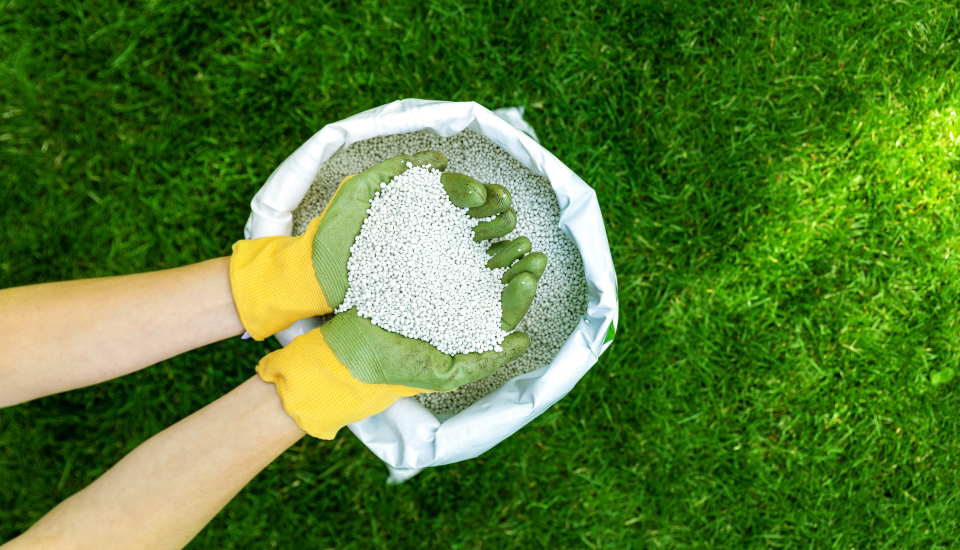
We have repeatedly emphasized that buffalo grass is easy to maintain, but a lack of fertilization could cause your grass to lose its health and beauty in highly sandy soils; fertilizing your lawn once every two months will help you keep your yard good-looking. Fertilizing in late autumn also helps to maintain your yard’s beautiful green color even in the winter. Using a fertilizer with wetting agents can help with the water flow, so you should always water well after every application.
3-When Should You Mow Your Buffalo Lawn?
Regular mowing can do wonders for your yard. It is especially important to mow your lawn frequently if you have buffalo grass as it helps with its care, and you can easily tidy your landscape too. It would help if you kept in mind that buffalo grass generally curves as it grows, so you do not have to mow it all the time to untangle it. However, if you mow it frequently, it can help preserve the grass as ground cover, and it allows the clippings and seed heads to build a very strong and durable growth habit in the soil.
4- How to Take Care of Thatching in your Buffalo Lawn?
Buffalo grass has a growing season that draws close in late spring to early summer. So, it could enter a period of dormancy and this period could lead create a lot of dead plant matter, also known as thatch. Yes, buffalo grass is drought tolerant, but too little moisture in an arid summer or cold winter chill could result in thatch. However, as long as you rake up all the thatch in your yard, it is very likely that your yard will green up and look just like it used to do again in the following spring.
5-How to Aerate the Soil for Your Buffalo Lawn?
If you have areas in your yard where the grass is not growing, you should use a pitchfork to aerate the soil. You can rope off the problematic areas to prevent foot traffic so your grass can have time to fix itself easier.
6-How to Control the Diseases and Pests in your Buffalo Lawn?
Diseases are more common in hot and humid environments and are generally caused if your lawn remains wet for extended periods of time. Wet areas can be an excellent breeding environment for diseases. The grey lead spot is the most common disease in Buffalo Turf, and you might need a closer analysis to identify the diseases. Insects like caterpillars and beetle larvae can damage lawns, so the timing of the treatment is crucial.
How to Grow Buffalo Grass Quickly?
You might be new to gardening and landscaping, and you might want to grow your grass as soon as possible. Luckily, buffalo grass is a type that naturally grows quickly, so with the proper care, and it can thrive in no time. For fast growth, make sure to fertilize quarterly (if the lawn is already established), or you can fertilize every eight weeks for newly laid buffalo turf. There are a few factors like the amount of direct sunlight as well as the foot traffic it gets that may impact the growth time. You should always water the fertilizer thoroughly, especially during Spring and Summer, so your grass can grow quickly.
Now you know about Buffalo Grass and how to plant and maintain it. So, you can select the type that suits you the best and have a beautiful-looking yard.
You can learn more about buffalo grass from here:
You may also be interested in:
Why Is My Snake Plant Dying? Simple Solutions


